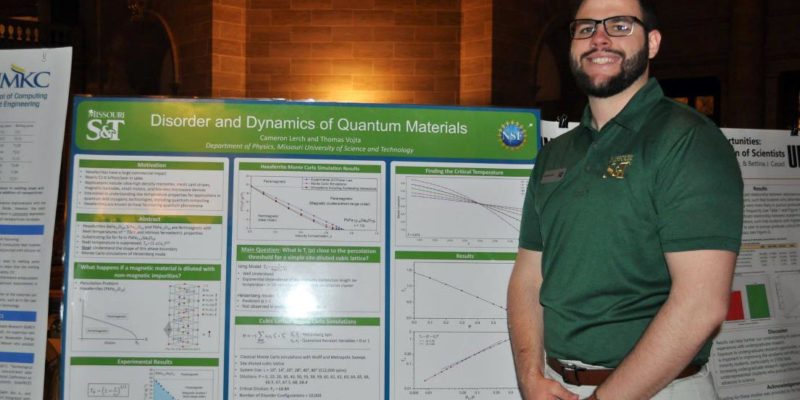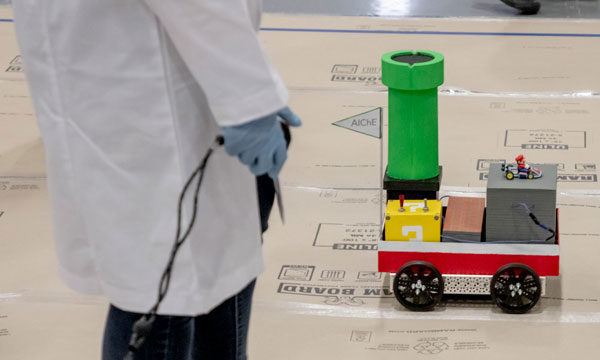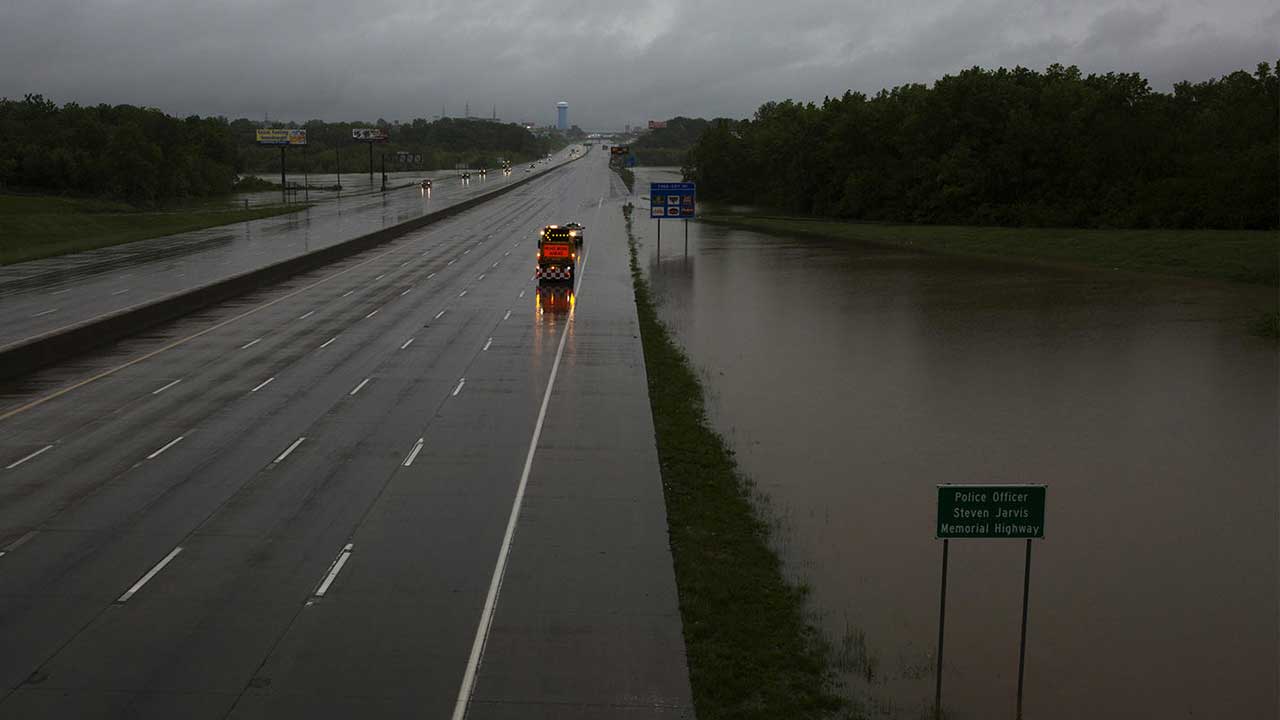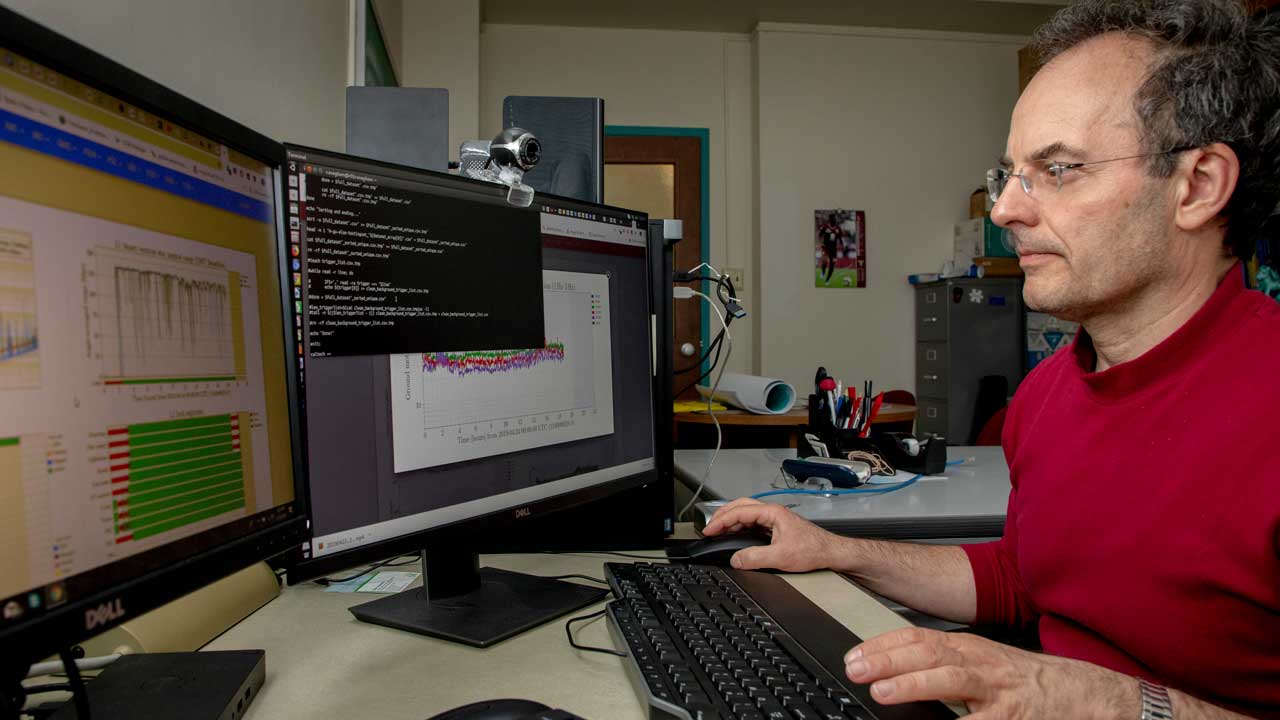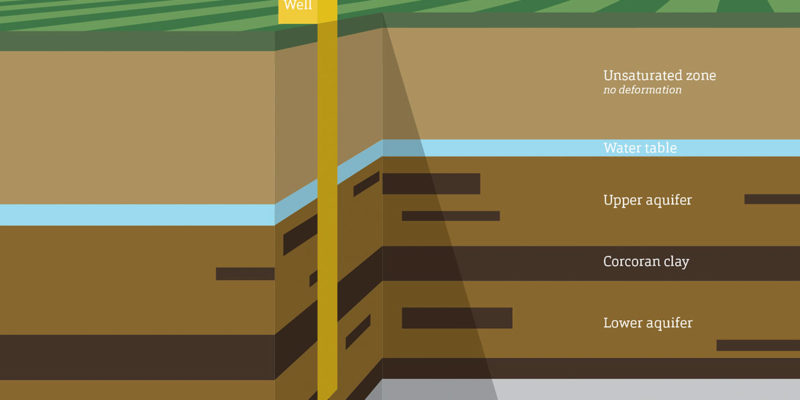Issues
Tamar Makharashvili: Exceeding expectations
As a child, Tamar Makharashvili was curious about computers. She wanted to understand their parts and how they worked. But her interest in technology wasn’t encouraged at home or in school in her home country of Georgia.
Read More »S&T celebrates fitness center expansion
Just in time to work off pre-finals stress, Missouri S&T’s newly renovated fitness center opened in May. The $4 million expansion more than doubled the facility’s footprint — from 6,400 square feet to 16,600 square feet — which allowed the number of fitness machines to also more than double.
Read More »Physics grad receives NSF graduate research fellowship
Cameron Lerch, Phys’19, was awarded a place in the National Science Foundation Graduate Research Fellowship Program.
Read More »Dehghani named chancellor of Missouri S&T
Nationally regarded engineer and academic leader Mohammad Dehghani began work as S&T’s 22nd leader on Aug. 1. He succeeds Christopher G. Maples, who served as interim chancellor since May 2017.
Read More »Doubling the space where dreams are designed
A Mars rover with a strong arm broke ground on an 8,000-square-foot expansion of the Kummer Student Design Center at Missouri S&T on April 26. The expansion will double the size of the design center, home of S&T’s 20 student design teams.
Read More »‘Glo-Kart’ heads to national competition
Powered by a six-cell lead-acid battery and stopped with a chemiluminesence reaction using luminol, Glo-Kart, one of two S&T entries in a regional 2019 Chem-E-Car competition, took second place and qualified for nationals.
Read More »James and Joan Woodard: Inspiring new generations of teachers and scholars
When Joan Woodard, Math’73, was in high school, there wasn’t much exposure to engineering. But that changed when she got to Rolla. “I had many friends studying engineering,” she says. “I knew that’s what I ultimately wanted to do.”
Read More »Deep learning to escape deep water
Artificial intelligence (AI) may soon help transportation agencies and first responders determine the best evacuation routes during floods, thanks to the work of Missouri S&T researchers.
Read More »At the forefront of astrophysics research
Using two 4-kilometer-long laser interferometers located in Washington and Louisiana, scientists with the Laser Interferometer Gravitational-wave Observatory (LIGO) detected a weak 1.3 billion-year-old signal from the collision of two black holes. The discovery proved the existence of the gravitational waves Albert Einstein predicted in his general theory of relativity.
Read More »Groundwater mapping, managed flooding may help stop sinking
Parts of California’s Central Valley, the state’s most productive farm region, sunk as much as 28 feet during the first half of the 20th century, and if modeling is accurate, the ground will sink another 13 feet or more over the next 20 years.
Read More »

